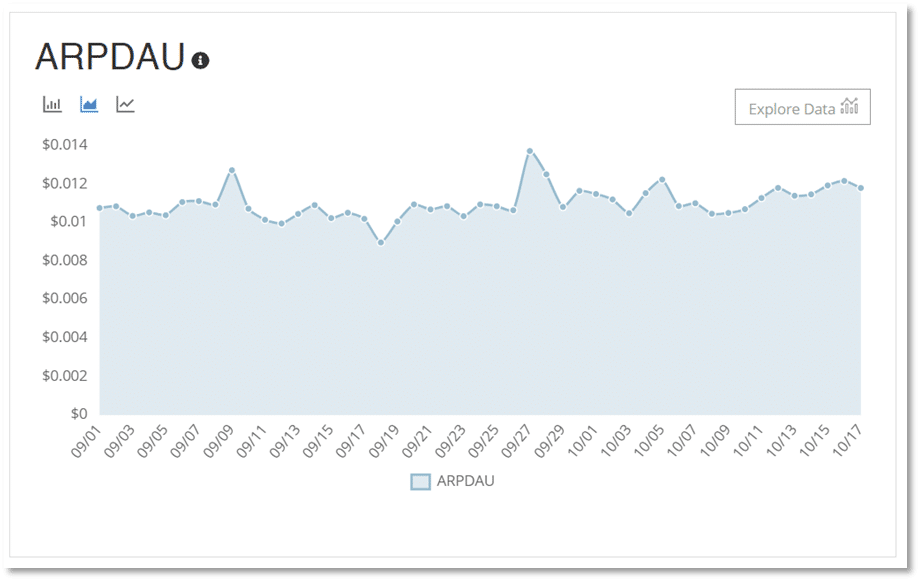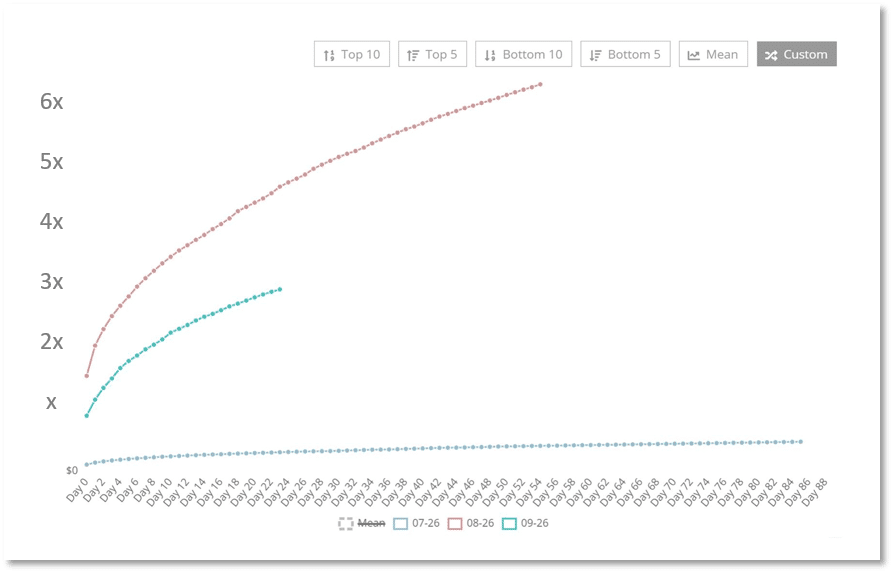What is ARPDAU and how should app developers use it?
App developers are faced with an ever-growing list of metrics with which to analyze and monetize their apps. One of the key revenue metrics that every app developer must become familiar with is ARPDAU. We’ll go over the basics of ARPDAU – what it is, how to calculate it, and how to use this KPI to make a better app.
What is ARPDAU?
ARPDAU stands for Average Revenue Per Daily Active User. It is a measurement that lets you compare app monetization over time, and is especially useful for identifying when changes to the app are impacting monetization.

Photo by Elisa Michelet on Unsplash
All revenue sources should be included, beyond app purchases and ad revenue, if you have other sources, such as licensing or sponsorships, be sure to include those as well.
How to Calculate ARPDAU
ARPDAU is calculated as the total revenue earned on a given day divided by the total active users for that same day.
For most apps, total revenue will be the sum of the revenue from ads, IAP, and/or subscriptions. For the most complete picture of ARPDAU.
The count of the total active users should include all users, even those that didn’t see an ad or make a purchase – the idea is to calculate the average across all users.
How to Analyze ARPDAU
App developers need to constantly monitor, analyze and iterate on their apps to find the right balance of monetization for their users.
Looking at ARPDAU on a daily basis ensures no sudden or unanticipated changes in monetization are occurring while looking at ARPDAU over time gives insights into longer-term trends.
For example, your app just introduced subscriptions as a new app monetization strategy. You would want to look at ARPDAU in the days immediately after to see if there was a negative impact to the existing monetization – perhaps caused by the prompt or even a technical issue. Then, in order to see the impact of subscriptions, you’ll need to look over a longer period of time to see how renewals are monetizing, so a 90 or 120-day lookback would be appropriate.
Ad rates regularly go through seasonal changes, be aware your advertising rates could go up or fall drastically during certain times of the year — unfortunately, while there’s very little you can do to control these swings, it is important to measure and take into consideration for your app monetization strategy.
Just today I grabbed this screenshot, displaying the impact of adding subscriptions to a customer’s app. The blue represents ads-only, a month later (red) the day subscriptions were added, and the green, a month after adding subscriptions. While the numbers have been edited for anonymity, we saw a sustained 5X increase in LTV. How would a 5X increase in your ARPDAU change your app monetization strategy?
How to Increase APRDAU
Three words: iterate, iterate, iterate! The only way you can find the right monetization strategy for your app is to test a variety of options and determine what’s best for your users. A few useful ways to approach this:
- Segment your users: Not all of your users are alike – geography, demographics, and app usage all vary from user to user. Not surprisingly, this also means that different groups of users have different ARPDAUs. Dividing your users by these characteristics into segments will help you understand how to tailor the monetization.
- User Experience matters: When determining where to place monetization opportunities, be thoughtful about how it impacts the user experience – does it seemingly come out of nowhere, or does it flow with how they are using the app?
- Ad Placement matters: Ads require an additional level of thoughtfulness when incorporating into your app. Most mobile advertising is “performance-based” meaning you get paid when a user interacts with the ad in some way. This means you can’t just show as many ads as possible, but must find the right balance of where and when to show an ad. You should experiment with different ad formats and ad providers to find the optimal mix.
Need help tracking your ARPDAU? We do it automatically. Sign up today for a free 14-day trial.
Interested?


